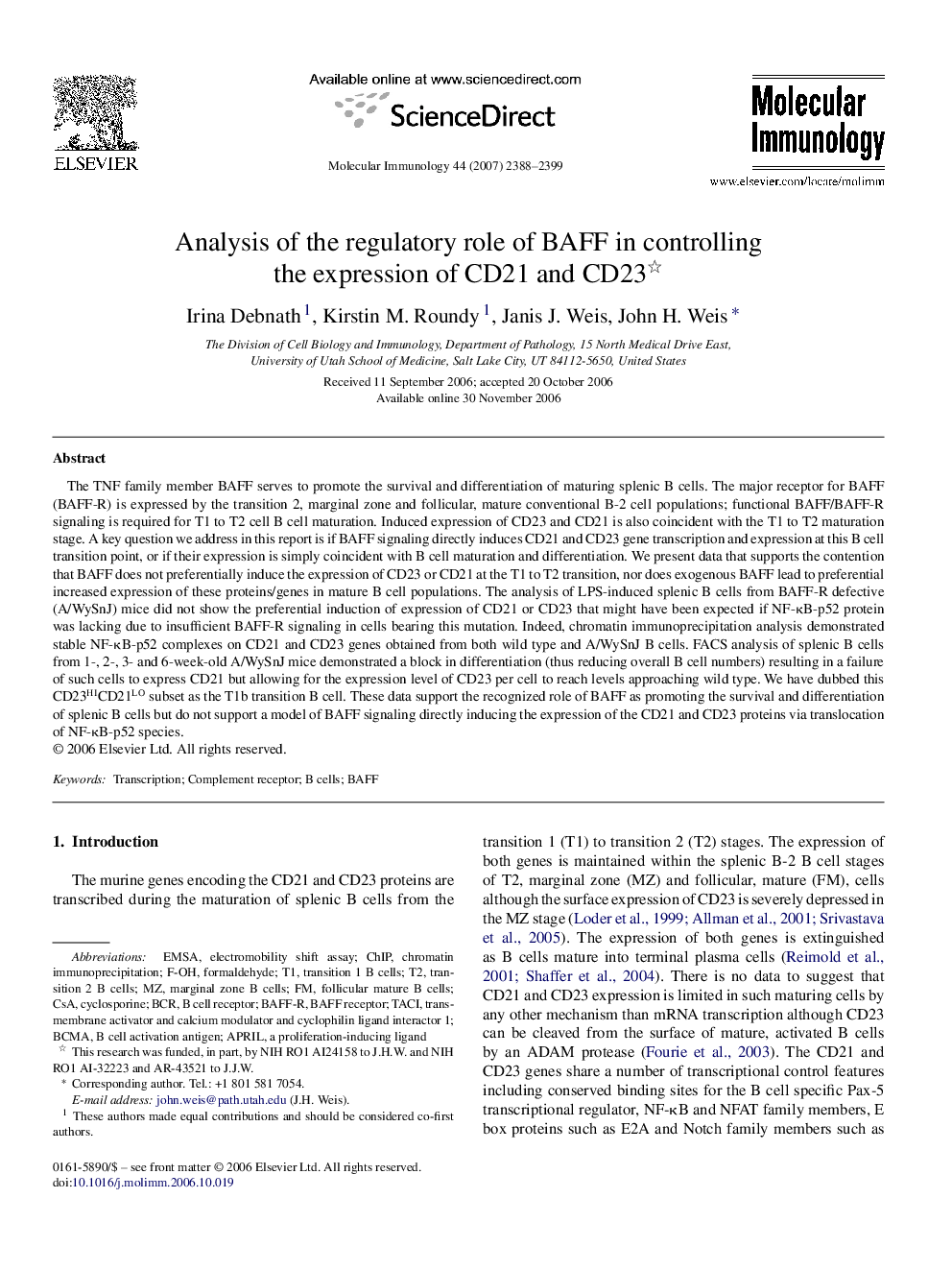| کد مقاله | کد نشریه | سال انتشار | مقاله انگلیسی | نسخه تمام متن |
|---|---|---|---|---|
| 2832246 | 1163832 | 2007 | 12 صفحه PDF | دانلود رایگان |

The TNF family member BAFF serves to promote the survival and differentiation of maturing splenic B cells. The major receptor for BAFF (BAFF-R) is expressed by the transition 2, marginal zone and follicular, mature conventional B-2 cell populations; functional BAFF/BAFF-R signaling is required for T1 to T2 cell B cell maturation. Induced expression of CD23 and CD21 is also coincident with the T1 to T2 maturation stage. A key question we address in this report is if BAFF signaling directly induces CD21 and CD23 gene transcription and expression at this B cell transition point, or if their expression is simply coincident with B cell maturation and differentiation. We present data that supports the contention that BAFF does not preferentially induce the expression of CD23 or CD21 at the T1 to T2 transition, nor does exogenous BAFF lead to preferential increased expression of these proteins/genes in mature B cell populations. The analysis of LPS-induced splenic B cells from BAFF-R defective (A/WySnJ) mice did not show the preferential induction of expression of CD21 or CD23 that might have been expected if NF-κB-p52 protein was lacking due to insufficient BAFF-R signaling in cells bearing this mutation. Indeed, chromatin immunoprecipitation analysis demonstrated stable NF-κB-p52 complexes on CD21 and CD23 genes obtained from both wild type and A/WySnJ B cells. FACS analysis of splenic B cells from 1-, 2-, 3- and 6-week-old A/WySnJ mice demonstrated a block in differentiation (thus reducing overall B cell numbers) resulting in a failure of such cells to express CD21 but allowing for the expression level of CD23 per cell to reach levels approaching wild type. We have dubbed this CD23HICD21LO subset as the T1b transition B cell. These data support the recognized role of BAFF as promoting the survival and differentiation of splenic B cells but do not support a model of BAFF signaling directly inducing the expression of the CD21 and CD23 proteins via translocation of NF-κB-p52 species.
Journal: Molecular Immunology - Volume 44, Issue 9, March 2007, Pages 2388–2399